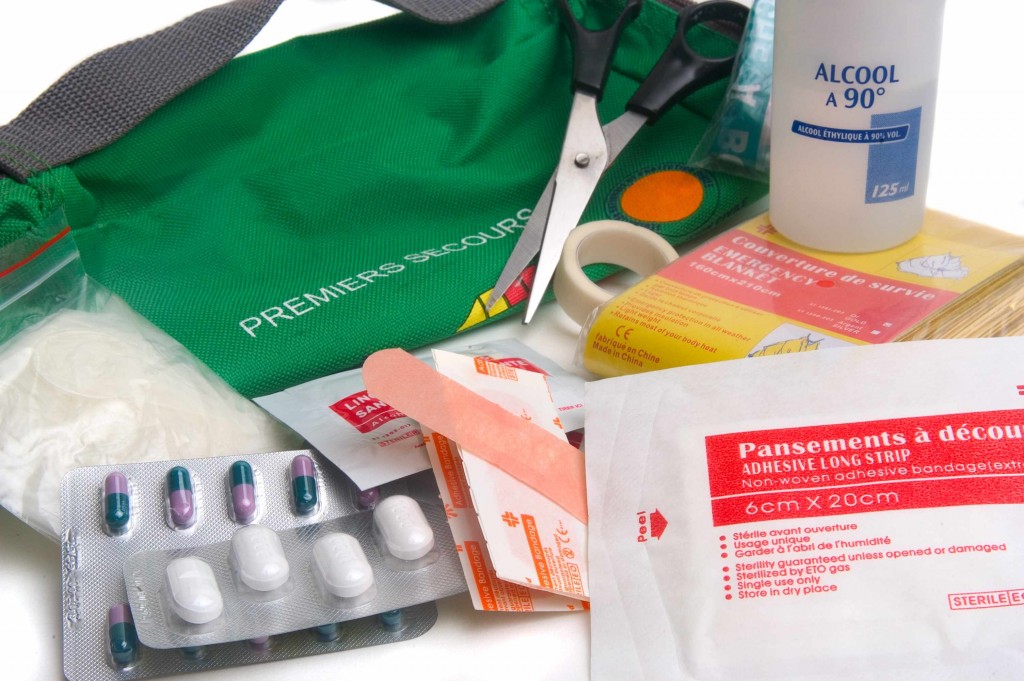-
First-aid kits: Stock supplies that can save lives
 First-aid kits
First-aid kits
A well-stocked first-aid kit can help you respond effectively to common injuries and emergencies. Keep at least one first-aid kit in your home and one in your car. Store your kits in easy-to-retrieve locations that are out of the reach of young children. Children old enough to understand the purpose of the kits should know where they are stored.
You can purchase first-aid kits at many drugstores or assemble your own. Contents of a first-aid kit should include:
Basic supplies
- Adhesive tape
- Antibiotic ointment
- Antiseptic solution or towelettes
- Bandages, including a roll of elastic wrap (Ace, Coban, others) and bandage strips (Band-Aid, Curad, others) in assorted sizes
- Instant cold packs
- Cotton balls and cotton-tipped swabs
- Disposable latex or synthetic gloves, at least two pair
- Duct tape
- Gauze pads and roller gauze in assorted sizes
- First-aid manual
- Petroleum jelly or other lubricant
- Plastic bags for the disposal of contaminated materials
- Safety pins in assorted sizes
- Scissors and tweezers
- Soap or instant hand sanitizer
- Sterile eyewash, such as a saline solution
- Thermometer
- Triangular bandage
- Turkey baster or other bulb suction device for flushing out wounds
Medications
- Activated charcoal (use only if instructed by your poison control center)
- Aloe vera gel
- Anti-diarrhea medication
- Over-the-counter oral antihistamine, such as diphenhydramine (Benadryl, others)
- Aspirin and nonaspirin pain relievers (never give aspirin to children)
- Calamine lotion
- Over-the-counter hydrocortisone cream
- Personal medications that don't need refrigeration
- If prescribed by your doctor, drugs to treat an allergic attack, such as an auto-injector of epinephrine (EpiPen, Twinject, others)
- Syringe, medicine cup or spoon
Emergency items
- Emergency phone numbers, including contact information for your family doctor and pediatrician, local emergency services, emergency road service providers and the regional poison control center
- Medical consent forms for each family member
- Medical history forms for each family member
- Small, waterproof flashlight and extra batteries
- Candles and matches
- Sunscreen
- Emergency space blanket
- First-aid instruction manual
Give your kit a checkup
Check your first-aid kits regularly, at least every three months, to be sure the flashlight batteries work and to replace supplies that have expired.
Consider taking a first-aid course through the American Red Cross. Contact your local chapter for information on classes.
Prepare children for medical emergencies in age-appropriate ways. The American Red Cross offers a number of helpful resources, including classes designed to help children understand and use first-aid techniques.







